Fig. 7.1
Faulty scalpel assembly. (a) Blade is not fully locked onto the handle (white arrows). (b) Blade is upside down (black arrow), hampering safe removal
Solution 1

Fig. 7.2
Properly assembled scalpel using bayonet-type handle. The oblique angle of the proximal end of the blade should be parallel to the oblique angle of the bayonet locking device on the blade holder
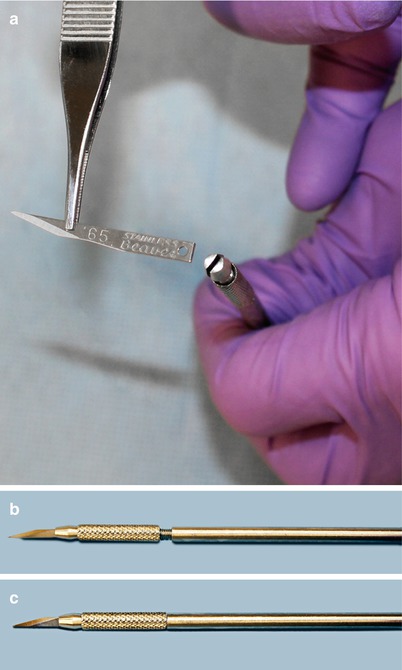
Fig. 7.3
Beaver handle with collet and blade. (a) Proper alignment. (b). Blade properly inserted. (c) Blade fully screwed and locked into the threaded end of the knurled handle
Solution 2
Use disposable scalpels that don’t require assembly or disassembly (Fig. 7.4). Disposable instruments may dull quickly.

Fig. 7.4
Disposable pre-assembled scalpel blade and handle
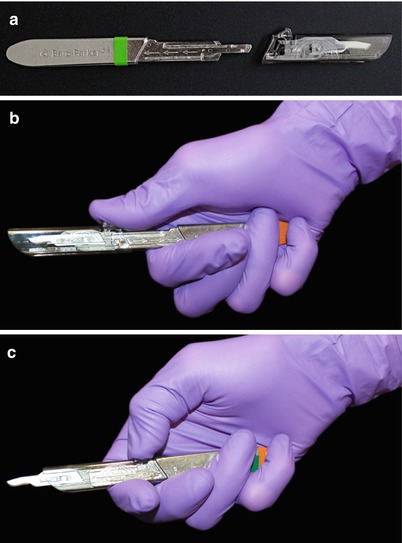
Fig. 7.5
Scalpel blade with easy assembly. (a) Disassembled. (b) Assembled with safety mechanism engaged. (c) Safety sheath withdrawn for use
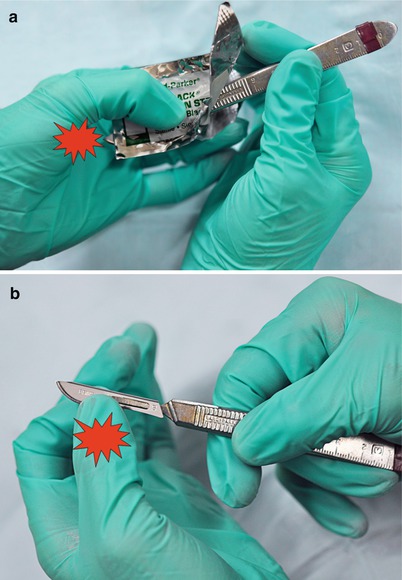
Fig. 7.6
Improper technique for loading blades onto bayonet scalpel handle. (a) Blade is blindly forced toward palm, potentiating deep stab wound. (b) Fingers abut belly of the blade, potentiating laceration
Solution 1
When loading a blade onto a bayonet blade holder, visualize then gently insert the blade until it clicks into place (Fig. 7.7).
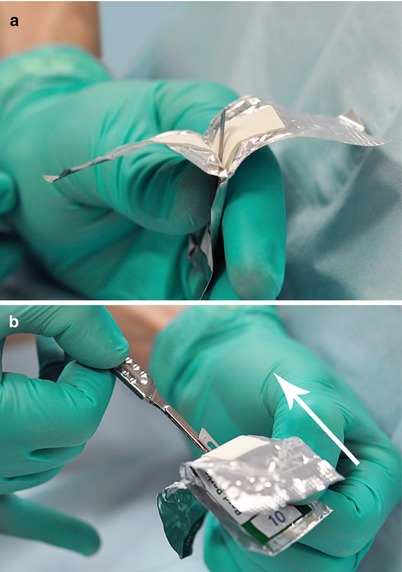
Fig. 7.7
Loading a bayonet scalpel handle properly. (a) Peel wrapper half-way. Hold blade away from palm (i.e., perpendicular to thumb/index fingers). Note: If it is parallel to the thumb/index fingers, the blade would aim toward the palm as in Fig. 7.6a. (b) Slide blade on bayonet (arrow) with controlled pressure
Solution 2
Use a hemostat to load the blade.
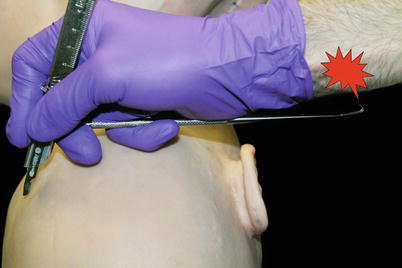
Fig. 7.8
Unsafely holding two sharp instruments in the same hand, here a scalpel and skin hook
Solution 3
Do not hold additional instruments in the hand holding the scalpel.
Accidents Happen When
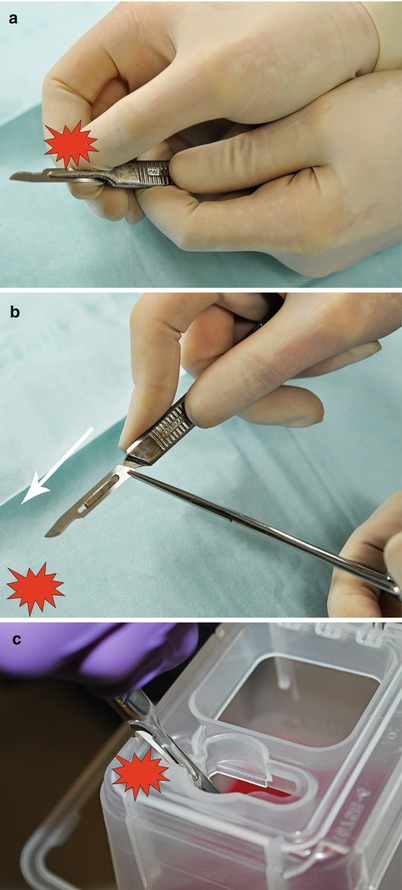
Fig. 7.9
Dangerous removal of blade from bayonet handle. (a). Digital removal places fingers at risk. (b) If hands are not connected in a “golfer’s grip”, the blade can suddenly and unexpectedly release (white arrow). (c) Twisting the blade off the handle using the sharps container can make it a projectile
Stay updated, free articles. Join our Telegram channel

Full access? Get Clinical Tree








